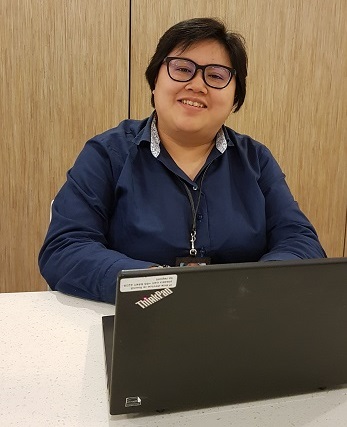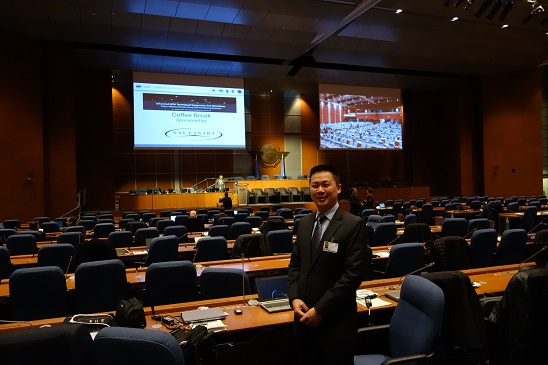In 1946, Singapore was entrusted by the International Civil Aviation Organization (ICAO) to provide air traffic services for the Singapore Flight Information Region (FIR). Today, as a leading Air Navigation Service Provider (ANSP), the Republic is responsible for the safe and efficient movement of over 670,000 flights in this area of air space every year. And the numbers are on an upward trend amidst a global aviation landscape that is also rising in complexity.
As our nation forges on, Bridging Skies takes this opportunity to reflect on Singapore’s journey to becoming a world-class ANSP.
This five-part Beyond Our Blue Skies series chronicles Singapore’s air traffic management (ATM) evolution through the eyes of the men and women who make it happen. From conversations with seasoned veterans to new officers – across air traffic control officers, engineers, trainers and support officers on the ground – we capture personal accounts and heart-warming anecdotes alongside the many important stories and milestones in Singapore’s ATM journey.
As their stories illuminate the philosophy behind Singapore’s investments in “man”, “machine” and “method”, you will also discover the passion, camaraderie and determination that have put Singapore in good stead to bring air traffic management to the next level – for the nation, the region and beyond.
The Edge of Enablers
In our third story, Christina Ong, Head, Air Traffic Management Systems Projects, Melisa Wee, Deputy Head, Centre of Excellence for ATM Programme Office (CEPO), and David Leow, Head, Air Traffic Management Systems Engineering Development, shed light on how digitisation and innovation have played a major role in enhancing Singapore’s ATM capabilities.
Three generations of LORADS
David Leow, who joined CAAS in 2010, describes technology as “enablers”. CAAS’s cutting-edge Long-Range Radar & Display System (LORADS), now in its third generation, is one such enabler.
In 1981, with the opening of Changi Airport, the first generation of LORADS was developed to support expanded airport operations out of the newly opened Changi Control Tower and Singapore Air Traffic Control Centre. CAAS leveraged the latest computing technology with each generation of LORADS to provide the systems support that Air Traffic Controllers (ATCOs) needed to manage the growing air traffic flowing in and out of the Singapore Flight Information Region (FIR).
Leveraging computer technology, LORADS II offered greater memory capacity and built-in features such as the Short Term Conflict Alert System that issued a warning if aircraft were flying too close to one another. LORADS III has friendlier user interfaces. It also generates a more complete air situation picture for ATCOs with its new Multi-Sensor Tracking capability that draws on inputs from various surveillance sensors. This fusion of multiple sources of radar information presents much more accurate data than in the past.
“The difference between LORADS III and II is massive, and making LORADS III operational was a major achievement for CAAS. It is one of the world’s most advanced Air Traffic Control (ATC) systems, with a lot more automation, tools and display enhancements to help ATCOs better manage traffic,” explains Christina Ong.

Christina Ong, Head, Air Traffic Management Systems Projects
While LORADS III is a cutting-edge ATC system, CAAS is always looking to improve its capabilities. Conceptualising and building an advanced system such as LORADS III took CAAS more than 10 years and it can be a painful to transition from one system to another. To smoothen these transitions and allow for more flexibility in operations, CAAS plans to develop a fifth generation ATC system that can be continuously upgraded in-house by its own engineers.
Swimming with Big Data
Another enabler in CAAS’s pipeline is System Wide Information Management (SWIM).
David sees SWIM as a connective layer to move pieces of information around easily for sharing and analysis. “My guys came up with a very good term called ‘Information Marshalling’, so this layer marshals all the information together and you simply plug in to receive it.”
“The intention is that all the various sources of data will be pulled together into a data rich layer using standard formats that we can easily tap on,” David continues. The data can then be easily fed to the wider community: Changi Airport Group (CAG), airports, airlines. While SWIM provides the Big Data, another team will analyse the information.

David Leow, Head, Air Traffic Management Systems Engineering Development
“We are one of the first ANSPs in the region to experiment with it… the one I built here at CAAS is more like a test bed, to try out the system, to learn more,” says David. Currently, SWIM is still quite new in this region, so CAAS is using it only for trials now, says Christina, elaborating that by connecting SWIM to operational systems in future, other countries can tap on SWIM for information, so the potential use for such a platform is huge.
Singapore is actively involved in the development of SWIM regionally and globally. David sits on ICAO’s Asia Pacific SWIM task force, which will implement SWIM in this region. David also provides advisory support to Singapore’s representative on ICAO’s Information Management Panel, which looks at developing guidance materials for SWIM globally.
No country left behind
Clearly, CAAS takes into consideration the requirements and systems of other ANSPs in the region when planning investments in new ATM technology.
“What drives technological innovation for us is to make a difference in the aviation community,” says Melisa Wee, who joined CAAS as a fresh graduate and was involved in LORADS III from its initial stages to its Phase One commissioning in 2013.
“ICAO has an initiative called ‘No country left behind’, which assists States in implementing ICAO’s Standards and Recommended Practices (SARPs). The main goal of this initiative is to help ensure that SARP implementation is harmonised globally so that all States have access to the socio-economic benefits of safe and reliable air transport. As a developing state before, Singapore has been a beneficiary of such thinking. Today, CAAS is committed to giving back to the global aviation community. We are helping to elevate the whole region. In ATM, there’s no point in us being ahead if everyone else is behind. It’s got to be a win-win. ” she continues.
.jpg?sfvrsn=2)
Melisa Wee, Deputy Head, Centre of Excellence for ATM Programme Office (CEPO)
For this reason, Singapore set up the Centre of Excellence (CoE) for ATM in 2012 to serve as a nexus for the exploration of ATM capabilities and solutions to meet the needs of Singapore and the Asia-Pacific through research and development (R&D). Melisa was seconded to the ICAO Asia Pacific Regional Sub-Office in Beijing, China, for 3 years and she is now part of the CoE for ATM team at CAAS to drive innovation.
Driving Innovation
Under the CoE for ATM, two facilities dedicated to ATM R&D have been established in Singapore so far - (i) the ATM Research Institute (ATMRI), established by CAAS and the Nanyang Technological University to undertake academic-based research for innovative ATM solutions; and (ii) the MITRE Asia Pacific Singapore (MAPS), established by CAAS and The MITRE Corporation to support CAAS in ATM R&D with the objective of ATM harmonisation in the Asia Pacific region. A third ATM R&D facility will also be set up in conjunction with the Institute for Infocomm Research.
CAAS also has other collaborative agreements with international ATM partners and research entities. These include the US Federal Aviation Administration (FAA), Airbus ProSky and Single European Sky ATM Joint Undertaking (SESAR JU) to advance ATM R&D. In March 2016, CAAS signed a Memorandum of Cooperation with the Civil Aviation Bureau of Japan (JCAB), CAAS’ first with a fellow Asia Pacific ANSP, to jointly promote ATM transformation in the region.
One of the key innovation projects under the CoE for ATM is the development of the Smart Digital Tower prototype. In collaboration with Mitre Asia Pacific Singapore (MAPS), CAAS developed a concept of operations for the use of Smart Digital Tower technologies at Changi Airport. This concept envisions a completely digitised real-time view of the aerodrome from state-of-the-art digital camera systems. It will empower ATCOs to access advanced surveillance and information tools to manage live air traffic, all from a remote location not necessarily close to the runway. Currently, CAAS is working with UK-based Air Traffic Management service provider, NATS, to develop the Smart Tower prototype to get it ready for operational acceptance.
“Another area that the CoE for ATM is looking into is Artificial Intelligence (AI) - our aim is to see how to integrate more advanced technologies and capabilities into the fifth generation ATC system,” shared Melisa.
David emphasises that ultimately, technology is only an enabler - it is there to support the ATCOs and not to replace them. Nevertheless, being such a critical enabler, technical options still to come will be a game-changer in enhancing Singapore’s ATM capabilities.
========
In the next story in our Beyond Our Blue Skies series, find out more about the innovative methodologies that CAAS has been adopting to continuously enhance ATM capacity, efficiency and safety.